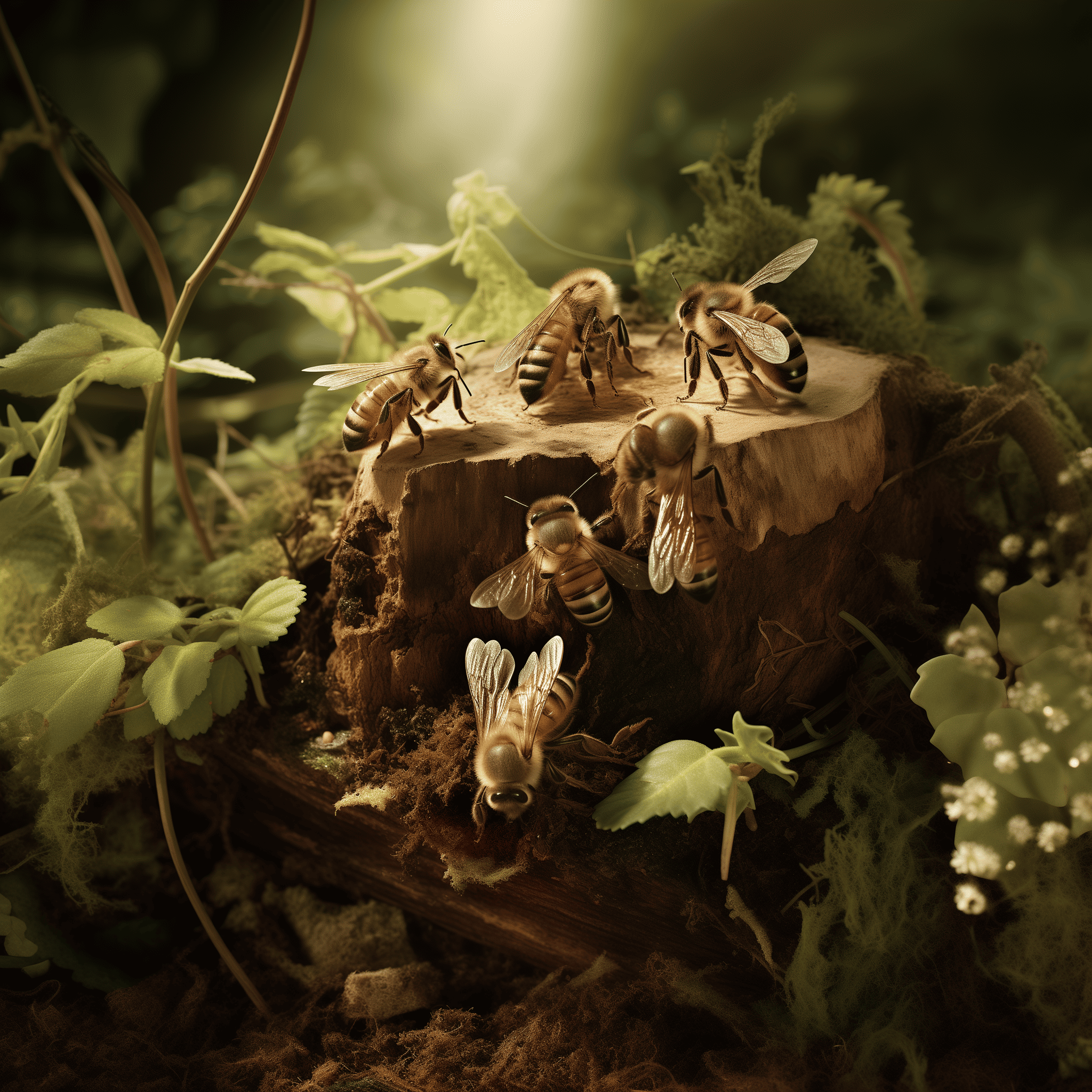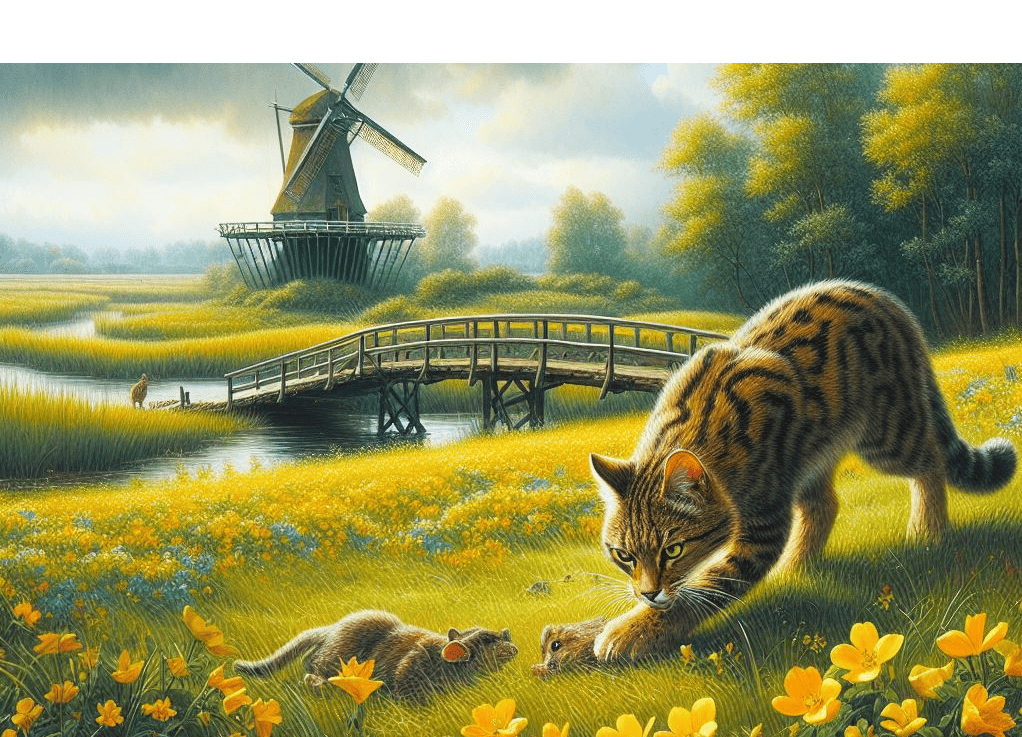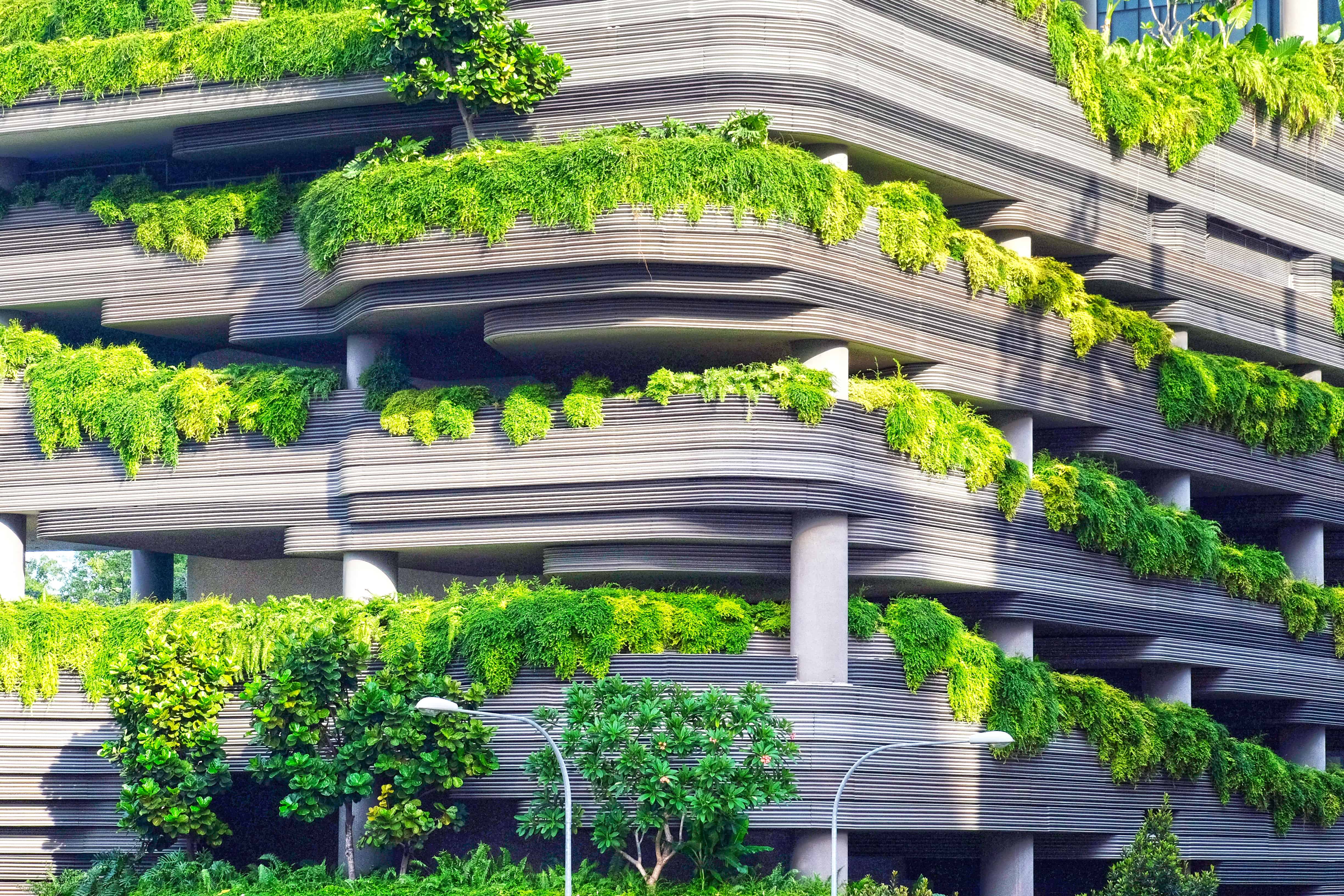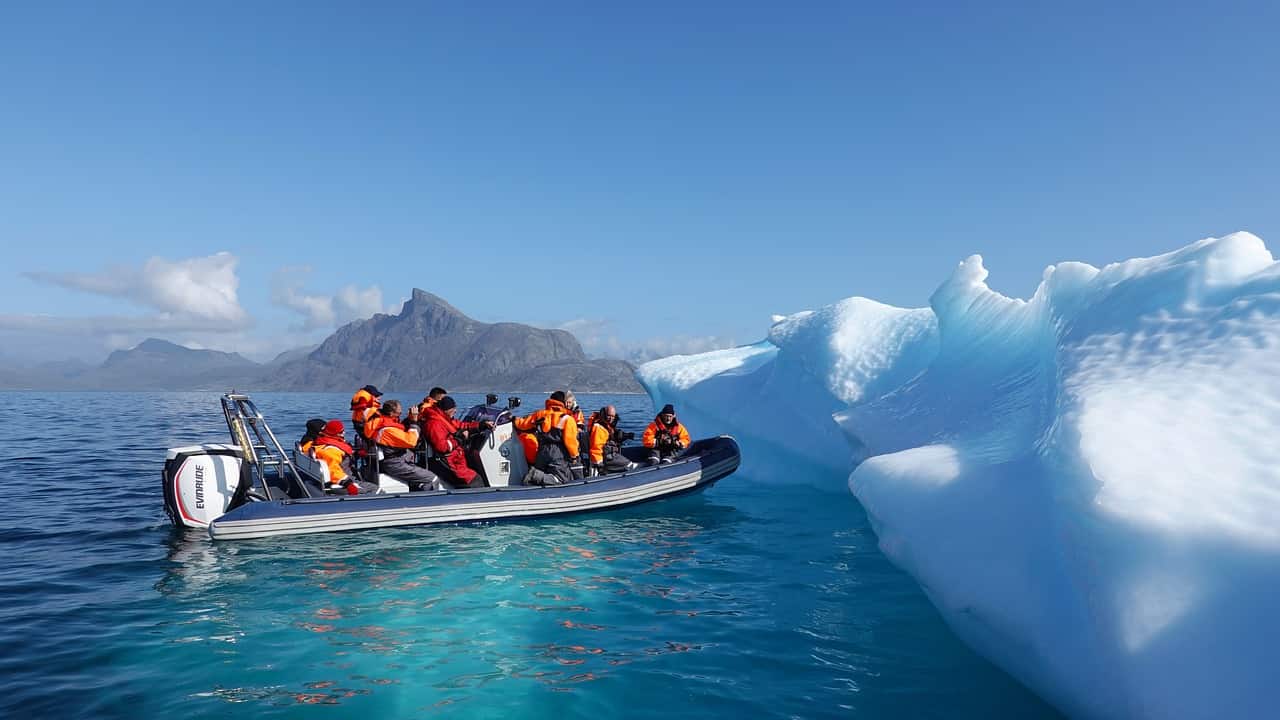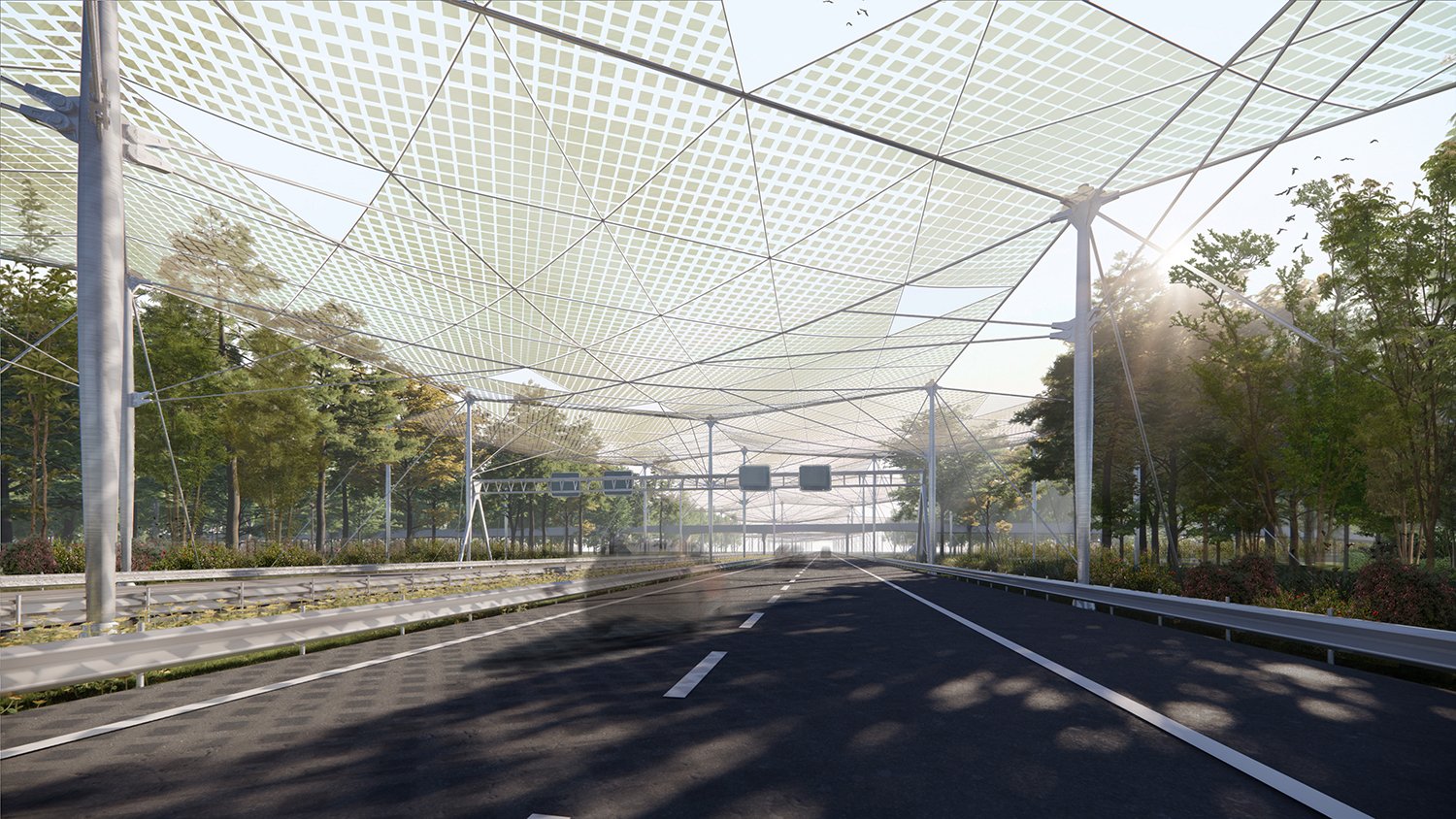
We already have tunnels in the Netherlands for wildlife and even complete ecoducts. In this way, animals can migrate from one nature area to another, just like in the past, unhindered by the freeway that cuts the landscape in half. Now a similar crosswalk has been devised for insects. After all, flies, butterflies, bees and other winged creatures have the greatest difficulty crossing a freeway because of air bubbles. And this net can also generate renewable energy.
In a densely populated country as the Netherlands, the need for solutions to safeguard biodiversity is high. Particularly, protecting insects is one of the priorities. Their pollination is behind 85 percent of the food we eat every day.
In a joint effort, VenhoevenCS, DS landschapsarchitecten, and Studio Solarix designed an ultra-light web to be installed over a motorway passing through Strabrechtse Heide heath – a natural area in the Dutch region of North Brabant. The network restores natural connective routes for wildlife and generates renewable energy at the same time.
The Butterfly Effect is the proposal’s name. It helps small-scale ecosystems while making an impact on the large-scale fight against climate change. Motorways are dangerous to insects, as they either die, or they need to wait for traffic jams to cross the road. On top of that, highways affect biotopes – areas having stable environmental conditions for plants and animals to live in.
“Our approach was to instigate a new way of thinking about generating sustainable energy in a way that is in harmony with our existing landscape. We wanted to look at the concept of ‘capital’ not only in an economic sense, but to broaden this out to encompass natural, human, infrastructural, and social capital”, told Innovation Origins Cécilia Gross, Partner and Director at VenhoevenCS architecture+urbanism.
The proposal was created for The Design Challenge organised by Kunstloc Brabant, Staatsbosbeheer and Het Groene Woud. After unveiling The Butterfly Effect, the cohort is looking for a partner to complete the first pilot project.
Minimising impact
Steel columns work as a modular support structure for the web of cables, inspired by the ones gossamers weave. The structure is easy to reuse and dismantle. Honeycomb-shaped surfaces – each of them divided into smaller triangles – compose the web, which produces solar energy through organic solar cells.
“In comparison to the construction of a field of solar panels, we produce three times less CO2 in building this web”, says Gross. According to the architect, the structure could be furtherly upgraded with new technical developments. New generation energy-generating fibres represent an example, as they could be stretched into the web. In addition to that, the energy-generating membranes will also evolve into better ones.
Since the web is not entirely filled with photovoltaic panels, water, air, and insects can permeate. Meanwhile, drivers enjoy a new experience. “We colour the surfaces in different natural shades to attract and tempt insects to move around the canopy”, Gross adds. This way, natural routes are thus preserved while giving motorists a completely different setting to drive in.
Furthermore, the structure takes care of the soil too. In fact, the web makes sure that nitrogen and particulates coming from the vehicles are released into the soil near the motorway. Therefore, it allows trees to grow along the road while reducing CO2 emissions. Woods on the sides of the road work as noise buffers, protecting the natural reserve from all the sounds coming from the highway.
Using the surface area over a motorway to generate energy also means reducing solar panels’ farms. This way, less land will be needed to produce energy. What’s more, is that nature gets back technology-free spaces where wildlife can prosper.
Scalable technology
The Butterfly Effect proposal was designed to be adaptable to different contexts, including the urban ones. Length can vary from a few meters to kilometres and more crossings can be linked together or divided into pieces. Such flexibility allows having different applications than the one over the motorways.
In the gallery: the web from the top, the structure, and an overview of its installation along the motorway.
“The design can be applied to urban environments and railway routes where there is also a lot of noise pollution, air pollution, or high energy demand: the web can be scaled and adapted to any size area and according to the needs of the local ecosystem”, says Gross. Thanks to its scaling possibility, The Butterfly Effect’s proposal can be applied globally, close to other nature reserves.
Redefining urban planning
Energy generation and biodiversity preservation come together in one solution. Inspired by nature, the web over the motorway rethinks human and natural environments, blending them seamlessly. The Butterfly Effect’s network itself is intertwined with treetops. Such connection would result in new ways of designing urban and non-urban spaces.
“We would therefore be excited to see in the future, or in different urban applications, how we could leverage the technology to augment the social capital of this design by integrating varied aesthetic elements”, Gross suggests.
Fostering a new sense of cohesion and harmony is one of the messages the proposal wants to convey. In preserving nature’s self-sufficient and sustainable ecosystems, the web hints at a more holistic approach, taking care of different aspects being part of the same environment.
Citizenship cooperation will be important to assess the proposal and to develop it. Only by experiencing The Butterfly Effect, it will be possible to improve the structure, aiming at cooperative investments that would make the web expand.
VenhoevenCS architecture+urbanism will be presenting The Butterfly Effect at Dutch Design Week. The event will take place in Eindhoven from October 16 to October 24.
Also interesting: Floating solar park in Sellingen is largest in Europe






